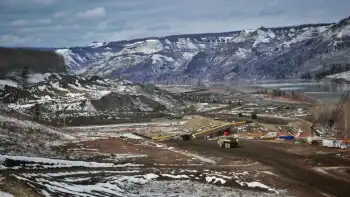Franklin pioneered the lightning rod
By Investor's Business Daily
Protective Relay Training - Basic
Our customized live online or in‑person group training can be delivered to your staff at your location.

- Live Online
- 12 hours Instructor-led
- Group Training Available
His mission from the Continental Congress: obtain help in the Revolutionary War against England.
The fame that preceded him was not due to his role as a statesman.
It came from his scientific work.
Franklin's research with electricity was famous in Europe, where his invention — the lightning rod — was in widespread use. His book "Experiments and Observations on Electricity," published in 1751, was widely read there and gained him access to men of influence.
Held up as a Founding Father — co-author of the U.S. Constitution — Ben Franklin had that other role of high significance: inventor.
Along with the lightning rod, his inventions include bifocals, a house-warming stove, the flexible catheter, the carriage odometer and a musical instrument called the armonica.
He built devices to solve everyday problems, such as extracting books from high shelves. He even helped create hospitals and academies.
Franklin's contemporaries ranked his research on electricity beyond many of his political achievements.
"Franklin really started the modern understanding of electricity," said Kristin Qualls, exhibit developer at the Franklin Institute, a museum in Philadelphia. "Others had studied it, but Franklin was first to really try to figure out what was going on. He was really taken by it."
As a statesman, Franklin successfully negotiated an alliance between France and America, securing loans and military support that helped make U.S. independence possible. He lit up the French with his wit, wisdom and unpretentious manner.
"They came to understand him as the epitome of an enlightenment man, rational and thoughtful, which they admired," Qualls told IBD.
No doubt Franklin employed his skills as a master marketer, which he'd demonstrated with his inventions. Take the Franklin stove. Invented in 1742 when he was 36, it was a technology breakthrough.
Fireplaces during the Northeast winters were inefficient, as most of the heat went up the chimney. Franklin created a standalone, iron-encased unit with a hooded front enclosure and a rear air box that could sit in the middle of a room. It used one-fourth the wood and generated twice the heat. It had technical flaws, but he made it a bestseller.
In newspaper ads and pamphlets, Franklin spotlighted the science of heat and its healthful benefits. He used graphics and clever verses.
He even wrote letters to newspapers, often under a pseudonym, to sell the public on his ideas.
He used similar techniques with his other finds, a reason he's called the patron saint of advertising.
Born in Boston on January 17, 1706, he was the son of Josiah, a candle and soap maker, and Abiah Franklin. He had less than two years of formal education when he left school at age 10 to help his father. Franklin remained passionate about learning all his life, though. He was an avid reader who taught himself algebra and geometry.
At age 12, he became an apprentice to his brother James, a printer, who published a weekly magazine called the Spectator. That was Ben's entry into the world of writing, printing and publishing, and he thrived.
When Franklin was 15, he and his brother started the New England Courant newspaper. Their relationship fractured, and Ben ran away. He ultimately landed in Philadelphia at age 17 to work in a print shop.
Six years later, he bought a Philly newspaper. "The Gazette was successful, but his biggest success was with Poor Richard's Almanack," said Mark Canada, who teaches Franklin classes at the University of North Carolina, Pembroke.
First published in 1732, when Franklin was 26, it came out under the guise of poor man Richard Saunders. Many readers found it the funniest and most intriguing almanac, with information on legal matters, weather and tips on farming.
Popular elements were clever Franklin maxims such as "Early to bed and early to rise makes a man healthy, wealthy and wise."
Meanwhile, Franklin made crucial improvements in the printing press. He helped set up paper mills and developed the first copper-plate press in the Colonies. Franklin eventually owned 18 paper factories, with a network of two-dozen printers.
He ended up printing 400 books and other publications. "Printing made Franklin a man of means, enabling his genius to range freely and productively over the realms of science and politics," Canada said. "He was a very savvy businessman and became a figure that represented how a person could pull himself up by his bootstraps. People wanted to be like Ben Franklin."
His most dramatic experiment of flying a kite in a storm was never formally recorded by Franklin. The event's exact day isn't known, except that it occurred in June 1752. Joseph Priestley published the accounts 15 years later from details he received from Franklin.
To test his hypothesis that lightning bolts are electric currents, Franklin attached a key to the end of a kite string that he held with a silk ribbon for insulation.
He connected a wire from the key to a jar, a container that could store electrical charges, like a capacitor.
With the kite in flight near a storm cloud, he noticed that fibers on the string were bristling, a result of static electricity. He touched his knuckle to the key and felt an electric spark. Those results, plus the charge stored in the jar, proved that lightning was electric.
This experiment led to his invention of the lightning rod, mounted on top of a building and connected to the ground by a wire. When lightning struck the rod, the electricity transferred harmlessly to the ground. Before his finding, lightning damaged or destroyed many buildings.
Though he could have made a fortune doing so, Franklin never patented his inventions.
"I never made, nor proposed to make, the least profit by any of them," he wrote. "As we enjoy great advantages from the inventions of others, we should be glad of an opportunity to serve others by any invention of ours, and this we should do freely and generously."
John Adams, who worked with him during the Revolution, said: "Franklin had a great genius, original, sagacious and inventive, capable of discoveries in science no less than of improvements in the fine arts and the mechanical arts."
Franklin constantly worked to improve his mind, body and behavior. He was an early proponent of physical fitness and an avid swimmer. At age 11, he invented a pair of swim fins that clamped to his hands. Franklin is the only Founding Father in the International Swimming Hall of Fame in Fort Lauderdale, Fla.
His invention of bifocals, though profound, was basic. Franklin carried two pair of glasses, one for seeing near and one far. He grew tired of constantly switching them. His solution? Cut the glasses in half and pair the halves into single frames.
During a time in London, he heard a concert played on wine goblets. Franklin set out to build the armonica, named after the Italian word for harmony. Using 37 glass bowls, he ran an iron rod through a hole in each, smallest to largest.
"Its tones are incomparably sweet beyond any other, and they may be swelled and softened at pleasure by stronger or weaker pressure of the finger," Franklin wrote.
Mozart and Beethoven wrote pieces to feature the instrument.
Franklin understood the value of networking. At age 21, he organized a group of friends and formed the Junto. Members included cabinetmakers, printers, a clerk, a merchant, a surveyor and a cobbler. They met on Friday evenings organized around Franklin's questions and debated morality, philosophy and politics.
Through his work with the club, Franklin is credited with initiating a volunteer fire department, a subscription library and a paid city watch. It was the genesis of today's American Philosophical Society.
Franklin died on April 17, 1790, at age 84. More than 20,000 people attended his funeral.
Among what he left: "If you would not be forgotten, as soon as you are dead and rotten, either write things worth reading or do things worth the writing."











